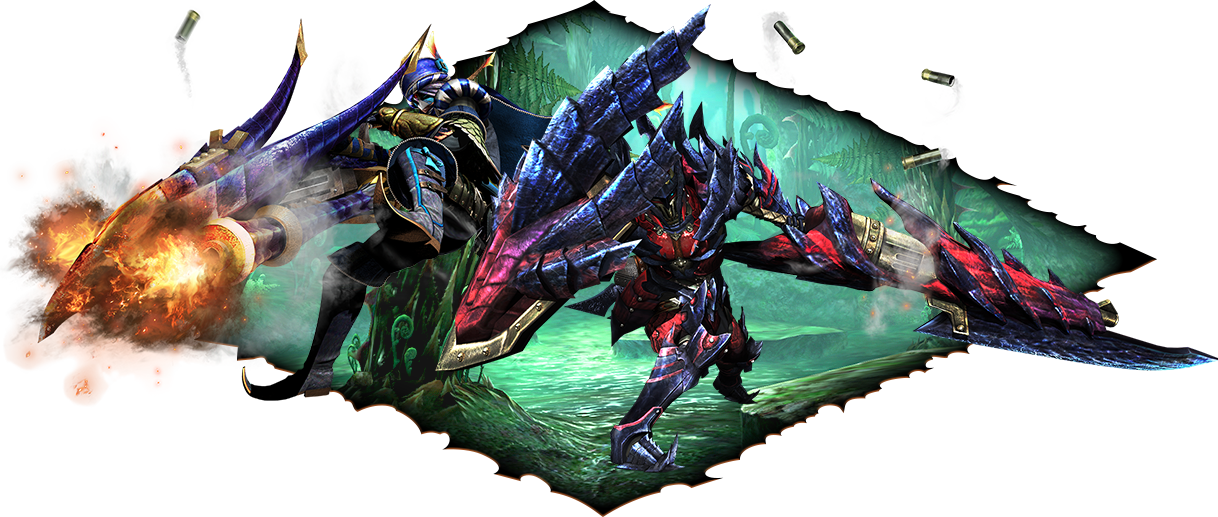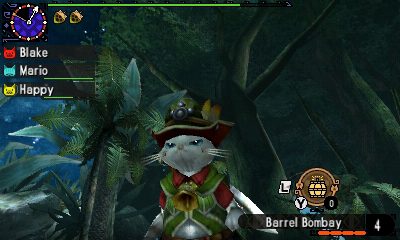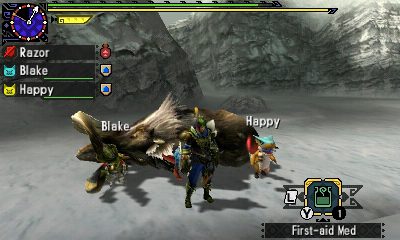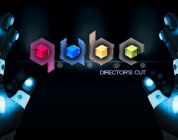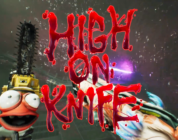While Capcom may have missed the mark with the past few Resident Evil games, focusing instead on remakes and re-releases, and there hasn’t been a new Megaman game in quite some time, there is one franchise that Capcom continues to shine with, Monster Hunter. Monster Hunter is essentially a game of boss fights in which the player is sorely outmatched as the creatures are massive forces of nature, while the player is a simple hunter armed with their wits and whatever weapons and items they can craft up. Precise challenging combat lies at the core of each hunt, forcing players to learn how each monster attacks and ways to tell what moves they’ll be doing when.
Crafting is the other half to Monster Hunter‘s appeal as there are a ton of items, weapons, and armor that are made with things from the environment as well as parts of the monsters themselves. Hunting a monster can slowly make the player begin to resemble the monster, adopting their strength both in numbers and in a psychological sense. It’s a series that has been around since its debut on the PS2 in 2005, first with only a small following, but has since become a mainstream title for 3DS players. That rich history over a decade of games is what makes the newest entry, Monster Hunter Generations, so special. Generations is a celebration of the franchise in the best of ways!
For starters the game plays similarly to last year’s Monster Hunter 4 Ultimate, which added the ability to mount monsters for a wild ride for extra damage, as well as some aerial attacks. Players of that game will feel comfortable with the combat, but there is plenty of new content for veteran hunters. Mounting has become more difficult this time through, so it will not be as prevalent during online play. New players may find Generations a bit confusing at first, as even from the get go, there are tons of options for how to play the game. At character creation, players will do the typical deed of picking a hair style, eye color, and voice pack for their hunter. However, one of the last choices is what style to play in: Guild, Striker, Aerial, or Adept.
I even found myself a bit confused at this choice, especially at the character creation phase. Of course, the demo had been out for quite some time to play with these new combat styles, but I opted out of the demo this time around. To shed some light on these new features, I will be going over briefly what those four styles are, just to get a taste of one of them. Also know that a player can change their style at any time like they would their equipment or item loadout, so no choice is permanent. Yet, some styles are better for more experienced players and so forth.
Guild – This is the basic style of the game and the best choice if a player is unsure what to use. This style allows for two weapon skill slots known as Hunter Arts, which are abilities that charge after successful hits that have a ton of uses like a new attack or being able to dodge and put away a weapon simultaneously. For players who don’t like change, this style will be a solid choice.
Striker – The Striker style is great for those who like fast, longer combos to deal tons of damage. Weapon charging times are also effected. Three Hunter Arts are usable with this style, making for a scrappy fighter with weapons like the Sword and Shield or an explosive damage dealer with larger weapons like the Hammer.
Aerial – Aerial is perhaps the most strange feeling for veteran players, but can also be a liberating experience. This style gives hunters the ability to leap into the air after rolling into monsters, barrels, or even other hunters. This opens up the chance to a multitude of aerial attacks and opportunities to mount the monster. A single Hunter Art is usable, as the player will make up for a loss in attacks with an increase in mobility.
Adept – The Adept style is all about timing, as it opens up powerful attacks while evading and guarding. Guarding perfectly opens up incredible counters that can string combos together easily. While evading properly allows the hunter to leap to the target to do similar attacks. Adept hunters, like Aerial hunters, can only equip one Hunter Art. Weapons and armor sets that are more defensive are great for this style, like the Gun Lance.
Style choice is just the beginning when it comes to being a great Monster Hunter. From here on out, players will slowly learn about the world around them and how they can use this world to meet their goal of being the ultimate hunter. Once the game begins, players get a typical scene of a small village with some eccentric characters like a Palico fondu chef or a cute, but stern Guild contact. After few quests, players will be able to travel to other villages with similar setups, but for those who have played previous games in the series they may feel familiar. One of which is the village from the first Monster Hunter on PS2, the first game I played in the series. In Generations, everything is just how I remembered it was and I cannot wait to be strong enough to pull the sword from the stone behind the house.
Other than the villages, players will also be spending a lot of time in the Palico Ranch. It’s here that hunters will raise, hire, and set their Palico friends out for adventures, as well as choosing a few to accompany them on hunts. These little cats are a staple in the Monster Hunter franchise and have become a much needed comic relief over the years, even if their constant noises can be a bit grading after several hunts. What’s cool about Generations is the new Prowler Mode, which lets players play as any of the Palico they’ve acquired. Some quests can only be done in Prowler mode, providing some interesting challenge to the game’s typical pattern.
Prowler Mode is a glorious feature, especially now that Palico weapons and armor are much easier to craft this time around. Add in the Nintendo cameo costumes that will be available as free DLC and running around as a cat has never been this much fun! Now to do an all Palico hunt of the dreaded Rathalos, which is a big, scary dragon for those who don’t know.
Of course another staple in Monster Hunter is its four player cooperative multiplayer mode. Players can easily search for rooms by what sort of quests they want to hunt or create their own room and invite friends. The process is incredibly simple and can lead to some amazing play sessions, especially at higher levels of play. In multiplayer, the monsters are tougher. This means that hunters are forced to work together to take them down. Getting rarer items also seems generally easier as well, as these quests can be quicker than a single player quest. The only shame is that some of these multiplayer hunts seem one sided, with hunters running to exactly where the monster spawns to beat it senseless in a matter of seconds. On the flipside, that same quest in single player may involve more trap setting to compensate for that lack of extra hands or having to learn the monster’s feeding habits to set up an ambush. However, some of the hardest monsters will definitely provide challenge for even the best outfitted players. This brutal difficulty is where the game truly shines, but casual players can still enjoy the experience as well in a more supportive role.
Thematically, Generations takes a more Jurassic approach to its monsters, as most of the new designs are dinosaurs or prehistoric beasts. Similar to the antagonistic nature of the Gore Magala, a jet black dragon that spread a virus through the land in Monster Hunter 4 Ultimate, players will have to throwdown with four reoccurring creatures known simply as the Fated Four. These beasts will be the main adversaries of the game, but won’t be the most challenging by far as challenge quests and DLC usually pit hunters against even more ridiculous odds. They remain as representatives of Generations are not only interesting designs, but awesome battles as well.
While Monster Hunter Generations doesn’t do anything drastic to the Monster Hunter formula, it does improve on it in a multitude of ways. Weapons and armor now use a similar upgrading system in which items fit into a category instead of having to have one particular type of ore. For instance upgrading the first Sword and Shield in the game takes a handful of ore, but the player can use either Iron Ore or even Earth Crystal. This makes upgrading generally easier, but I also found that I was doing it less often than usual. Each weapon felt strong enough to stand on its own for a at least a few major enemies, without needing an upgrade. I’m sure that rate of needing different weapons will increase as enemies become harder, but the game doesn’t require it early on.
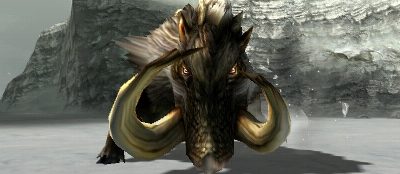
The Bullfango is a fairly easy monster, but his knockback potential can lead to some dire circumstances.
Experimentation with the weapons, armors, and playstyles is encouraged as there is so much customization to be had that it would be impossible to cover in a single article, let alone a websites worth or a Youtube channel’s worth. Playing around with various weapons with different enemies is fun and challenging oneself can be interesting as well. Already beat a Lagombi? Try doing it with a weapon you do not usually use or in Prowler mode. No two players will play the same path on their way through the ranks. I usually play with the Gun Lance, but this time through with the smaller enemies occurring in the lower rank quests, I’ve been using a Sword and Shield for its quickness.
Monster Hunter Generations is a game about options and problem solving. In the simplest of terms, it sets up an enemy and the hunter’s goal is to beat that enemy. To do this it takes a ton of item gathering, mastering of the games mechanics, knowing the monsters and their behaviors, and sometimes bringing in some friends. The small tweaks Capcom have made to this particular entry are great and make a more solid experience, but there are still a lot places this franchise could go.
Most notably, I’d love to see it back on consoles like the Wii U version of Monster Hunter 3 Ultimate. One of the reasons I got back into the series was the ability to play with my friends who had a Wii U copy, while everyone else played on their 3DS in the same room. It’s a feature I missed sorely in Monster Hunter Ultimate 4 and its one I’ll miss for Generations. However, there’s always a chance it will come to the NX. Until then, Monster Hunter Generations is another improvement on a franchise that makes for a solid portable experience.
I’ll also add that in China there is a PC MMO known as Monster Hunter Online that looks fantastic. Since it takes about nine months to a year for Monster Hunter to go international, that time frame would line up as a possible NX launch title that could change the face of how Nintendo does online gaming. It’s a bit of a stretch, but until the game is officially localized, if ever, that’s my biggest hope to try it out.
For new hunters, I’ll take a moment to recommend a few resources to tackle the vast world of complexities this game has to offer.
The Monster Hunter Generations Wiki – a great place to dig up item combos, weapon damage, and the like. Think of it as a database for things that are just impossible to remember or that are hard to find alone.
Gaijin Hunter – A Youtube channel dedicated to Monster Hunter. This is a great place to learn how weapons work visually, especially the combo system. Many a secret move can be learned with this master of hunting. He also educates his viewers in an easy to understand way that makes the game a lot more approachable.
MHG Resource Thread Reddit – A Reddit thread that has a bunch of information on things that people are learning in real time. Things like how to make money in a quick fashion or ways to change button layouts for various attacks. Tons of great information here that’s being constantly updated.

